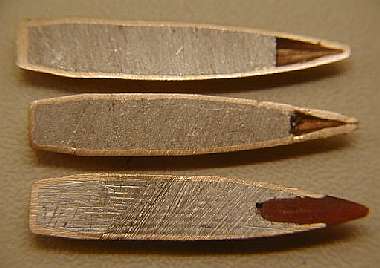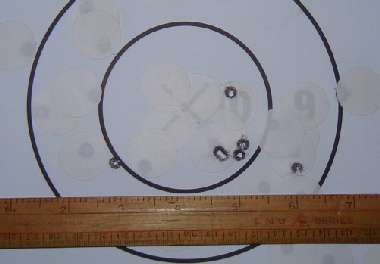![]()
VLDs and varmintsIntroductionThe purpose of this page is to provide a resource for those who are interested in putting the superior downrange ballistics, consistency, long range accuracy and wind-bucking performance of VLD-style bullets to work for effective and humane wildlife management. This page is an early draft/working document. In the near future we will cover topics from load notes, through rifle construction to use of ballistics tables, rangefinders, wind-judging and long-range shooting techniques. But for now, we will just provide a brief overview of the bullets we are talking about, and an indication of the results which can be expected on paper and in the field. Ethics and the lawThe killing of any animal, whether for sport and/or for wildlife resource management raises ethical and moral questions for the thoughtful hunter. Inevitably, governments and their agencies like to meddle. We urge our readers and customers to work within any local legal constraints. Legal niceties aside, the accepted principle is to avoid causing our quarry unnecessary suffering. Now let's not beat about the bush. All forms of hunting and wildlife management necessarily involve some degree of suffering, but few approach the cruelty and suffering inflicted by "natural" population control - predation, starvation and disease. Ultimately, it is for each hunter to decide what is reasonable, necessary, practical and safe - and if in doubt, not to slip the safety catch. Theory is all very fine, but in the end we can only learn from experience how to hunt as humanely as is practicable, having regard to our equipment, training, and environmental conditions. This page is dedicated to the exchange of that knowledge and experience. |
|
BulletsThese are some of the bullets we're talking about - three typical low-drag match bullets, all 6 mm (0.243") calibre: Top: Sierra 107 grain HPBT Matchking Middle: Berger 105 grain VLD Bottom: Hornady 105 grain A-Max |
 |
Practice/zeroingA typical 7-shot group fired without sighters at 510 yards in a light fishtailing 5-7 o'clock breeze. Bullet was 6 mm Hornady A-Max from a 8" twist Border barrel chambered for 243 Ackley. Muzzle velocity is 3050 fps, BC is about 0.50. Terminal velocity and energy are 2,150 fps and 1,075 ft-lbs respectively at 500 yards. Shooting plenty of groups on paper is vital. Try to ignore the good groups and concentrate on the "flyers". These are potential misses in the field, or shots which risk wounding. In this case the group size is 3.2", centred well enough for humanely killing rabbits or larger animals. One or two of the seven shots would have missed a crow. This is by no means a record group but, importantly, the shooter now has a measure of the limits of his skill and equipment under similar field conditions. |
 |
Field resultsA slow-trotting dog fox killed at 208 yds. The 105 grain .243" A-Max struck an inch or so behind the shoulder, entering between two ribs. Although encountering only 4" of soft tissue, expansion was more than adequate. Exit hole diameter is 2.5". The predator dropped dead in his tracks, melting a patch of frost.
|
 |
| Another unfortunate fox; this one got in the way of a .224" calibre 70 grain Berger VLD. The range was only 165 yards. These bullets are perfectly satisfactory for killing pests and small deer at such short range, as this exit wound photo shows. |  |
| Exit wound on a Roe buck, shot broadside at 412 yards with a .243" calibre 105 grain Hornady A-max. The bullet entered between two ribs just behind the left shoulder and exited here at the right rear rib cage. Good penetration and plenty of blood trail, though this deer stumbled only a few paces when shot. | |
| Not easy to tell which is the entry and which is the exit wound on
this one...
In fact, this nest-robbing varmint was facing square onto the rifle for an easy, windage-free shot at 442 yards. Even on such a small creature, the .243" calibre 105 grain Hornady A-max has expanded enough for a humane kill. |
 |
Other dataOn the whole, we have found that 22 and 6 mm calibre Berger VLDs show somewhat slower expansion and better penetration than the Hornady A-max. At present we do not recommend the use of 22 or 6 mm Sierra Matchkings on varmints and thin-skinned game. |
|
|
|
Last updated: October 26, 2006 |